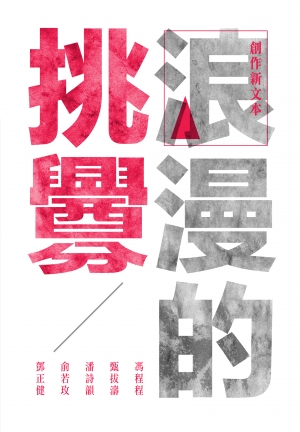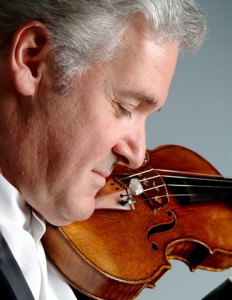The rarely heard Renaissance instruments premiered the “Royal Festivities at the French Court in the 16th Century” in Hong Kong. Doulce Mémoire Ensemble, an ensemble that specialises in Renaissance music debuted its new production. This production was a commemoration for the 500th anniversary of the accession of François I. Hong Kong was very honoured to receive this premiere as part of the programme in Le French May 2015. The same performance will be staged in Seoul, Bangkok, and Singapore.
The performance successfully combined period music with authentic customs and dances. It contained ten scenes and ran a total duration of ninety minutes. Totally forty-five compositions were heard, compiling chansons and dances of various kinds. The performance meant to be a reconstruction of the French musical scene of the 16th century Renaissance period.
The wind musicians were Denis Raisin Dadre, Adrien Reboisson, Elsa Frank, and Jérémie Papasergio. They did a great job on the selection of instruments for pieces. Basically, they formed various groups of combination: respectively recorders, column flutes, douçaines, shawms, and crumhorns ensemble.
Occasionally there was lighter wind instrumentation, which accompanied the soft voice sections. The recorder ensemble was able to do quicker moves on pitches; hence the lively sections were mostly distributed to the recorders. This combination was effectively articulating the light-hearted sections. The column flutes ensemble sounded in most sweet and soft compositions. The sonority of the column flute ensemble resembled the timbre of a pipe organ. The dynamic range seemed to be quite limited, but the ensemble had selected pieces carefully by allocating this combination on softer and slower sections. Hence this limitation in dynamics did not affect the performance much.
Unlike the recorder and column flute ensemble that gave a consistent timbre throughout the spectrum of tessitura, the set of douçaines represented a more varied spectrum of sonorities. The soprano douçaine sounded like a soprano saxophone in the low to mid register, but with a much nasal timbre, and much softer; whereas it sounded a bit like bagpipe in the higher register. For the lower douçaines, it resembled the sound of a bassoon, quite expected since this was the predecessor of a modern bassoon. The douçaine ensemble hence gave a very special spectrum of sonorities.
For the shawms combination, the more exotic set of instruments, accounted for the louder and more rustic sections. Also it accompanied mostly quick dancing sections. Since the reeds were subjected to sensibilities towards temperature and humidity, instabilities on pitches were experienced. Despite this, it was beautiful to note that Renaissance instruments were not yet invaded by the twelve-equal temperament. The just fifths on the shawm ensemble was especially beautiful and pleasant to our ears. The older temperaments were more closely adjusted according to the human ears, which we could barely heard nowadays, thanks to the standardised way of tuning instruments according to the equal temperament.
A set of rarely heard and seen instruments, crumhorns, played in the Fagot and Hoboecken dans in the seventh tableau. Its timbre resembled closely to a French musette, a French bagpipe. The pick of instrument was clever, as the seventh scene depicted the ludicrous dances and songs of the peasants. The resultant timbre of the crumhorn ensemble was very effective in portraying a pastoral soundscape.
Apart from selecting their instruments cleverly for each piece, they also demonstrated their ability on handling multi-instruments. Since this group of four was responsible for recorders, column flutes, shawms, douçaines, and crumhorns. They were able to swap and adapt to another instrument in a pretty quick manner, i.e. swapping from a recorder to a shawm. This skilful management of instrumental playing was not a usual one among classically trained players. One would not expect a violinist swapping from violin to viola and cello back and forth during a performance, nor a flutist swapping quickly among flute, oboe, and clarinet. The lip tension playing on a reed-less instrument is readily different from a double-reed instrument. It was amazing to see how the performers quickly swap and adapt to another instrument. Multi-instrumentalists are highly common in folk music. This flexibility might also be a clue to show a trace of folk influence in Renaissance music.
The percussionist Bruno Caillat knew very well his instruments, and was able to manipulate all of these in an idiomatic way. Caillat’s background was pretty diverse, he studied in the Paris École Normale de Musique, and then he gained exposure to percussion traditions from Persia, Turkey, Arab, and India, and of course Western medieval and Renaissance idioms. No wonder his technique on the hand drumming was so charming, rarely seen on a classically trained percussionist. Basically he performed on several instruments this night, a tambourine, two hand-drums (one with rattle rings and one without), a triangle.
The tambourine was played with great preciseness, especially seen in the Allemandes in the third tableau. Basically the tambourine generated three groups of timbre, firstly the shaking of jingles, secondly the “dom” and “bak” on the skin, thirdly, a muffled strike on the jingles with palm. The third sonority, resembling a cabasa, decorated the offbeats in a subtle manner. These three techniques were extensively interchanging in this particular dance, vividly accompanied the dance tune with great precision and nice choice on timbre.
The ring-attached hand drum playing was also stunning, firstly seen in the Basse danse in the first tableau. This hand drum consisted of set of rings on the inner ring of the frame. Upon striking or shaking, the rings would give rattling sounds. The rattling could be a decoration to the skin sound or otherwise as punctuation of rhythms on its own. Also the left-right hand coordination on tapping was gorgeous. The triangle was employed in the seventh tableau. It played a rhythm of continuous quavers. The four quavers formed a group, and the first two quavers were muffled sound; whereas the latter two were open sound. The muffled sonority is seldom heard in classical context. Nevertheless, the combination of the open and muffled sonority was a nice one, pulsing the music to drive forward.
Pascale Boquet played on the Renaissance guitar and lute, where chordal accompaniment was provided. These plucked instruments were soft and supportive to all combinations on stage. The intimate sonority of the Renaissance guitar, combining with her relaxed playing manner, worked very well on the light-hearted sections; whereas the lute perfectly decorated the calm or sorrowful sections. The two vocalists Véronique Bourin and Hugues Primard, soprano and tenor respectively, had a main role to lead the flow of storyline. In their singing, there was no exaggerated vibrato, which was commonly employed to mess up the text, unintentionally. Their naturally sung voice fluently displayed the text of songs.
For the staging, the ninth tableau was a tense one. The masked female dancer was under a bluish spot light, carrying an hourglass. Hourglass was a symbolic item, which slowly and mercilessly count the passage of time. In this tableau, this masked dancer fought with the other dancers, the Empress, the Knight, the Bigot, etc. All of them were defeated by the hourglass-holding dancer, and they were then under freeze motion. Eventually, the hourglass-holding dancer tied them up with a band, and carried them out of the stage. This powerful symbol signified that human being of all classes would eventually vanish in the passage of time. This dramatic staging was accompanied by a short song, Canto degli spazacamini. The amusing atmosphere from the song seemed to be a satire to what was actually happening on the stage.
It was amazed to witness all the musicians played from memory for ninety minutes, together with the logistic on swapping instruments. Apart from the musical materials, they were also required to memorise all the staging movements, which might be challenging to classically trained players. Their standing posture and flexible movements on the stage represented a very natural way of playing music. Unlike sacred music or later music, which were to be performed in a solemn way or sat manner. This kind of natural postures was largely associated with secular music. The music was especially light-heartedly performed in this manner. Baroque orchestral players also adopted the standing posture of playing, but the Renaissance music players tonight further extend this with other limbic movements, as if they were simply displaying the enjoyment of life through music. Also interactions were much treasured among performers, which were rarely seen in nowadays concert.
The author was situated in the O row, approximately a mid-way of the auditorium. The dynamics and balances were just right. Yet one might wonder if the back rows would experience the same. Unfortunately concert venues in Hong Kong were not good at capturing delicate sonority, as audiences would encounter in early music. One might imagine how the sonorities of the performance be enhanced if it was staged in a Baroque or Rococo built chamber, or even in a gothic and Renaissance architecture. The resonance and decay would then be working at their best.
Concerning the music appreciation on Renaissance music, one could not expect or judge it in terms of virtuosity. On the first hand, early music from Medieval and Renaissance era was not intended to show off instrumental virtuosities. Also given the limited musical language, for example complicated contrapuntal techniques in late Baroque music, one could not expect such complexity be found on Renaissance’s voices. It is worth notice that the instruments at that time were not yet well developed to play a wide range of notes, most instruments could only play approximately a range of a normal vocal voice. For example, crumhorn could only play a range of a ninth. Limited ranges and tessitura, and sometimes instabilities, on the instrument also disallowed virtuosic playing. It is more important to show appreciation towards the ensemble’s efforts on reconstructing the music. Personally, the authenticity of this performance is far more important than the complexity or virtuosity that some other audience or music lovers might have expected. Concerning the authenticity on customs, one could compare easily these with the oil painting created during the 16th century. It was lucky that artistic records were well preserved in the European cultures. Mobile operator 1010, as a sponsor, had generously lent their gallery for exhibiting these authentic items, including customs, scores, paintings, etc. The audience could explore these in order to get familiar with the Renaissance items.
The reconstruction of Renaissance music by Doulce Mémoire was especially idiomatic and precise. The overall flow and design of the performance was nicely planned, hence allowing the best flow on staging. This performance was superb and gorgeous, for its authenticity on the period music, dance, and costumes. It was also a precious occasion that rare Renaissance instruments like douçaine, crumhorns, and shawms were displayed and heard on the stage. The wisdom of timbral selection was especially reflected through the choices of instrumental combination. Also the musicians demonstrated their perfect skills on the instruments, giving the audience a pleasant and enjoyable night on this Renaissance artistic banquet. We look forward to seeing more performance alike in the future.
本網站內一切內容之版權均屬國際演藝評論家協會(香港分會)及原作者所有,未經本會及/或原作者書面同意,不得轉載。










